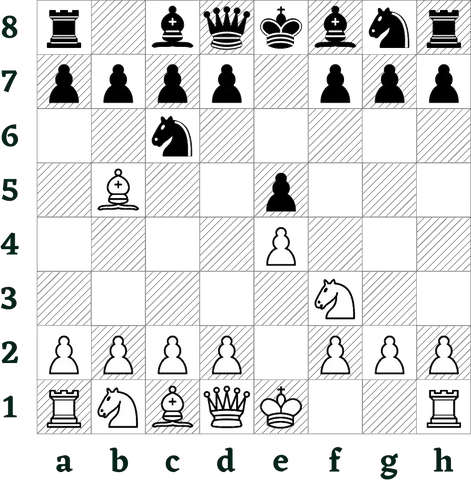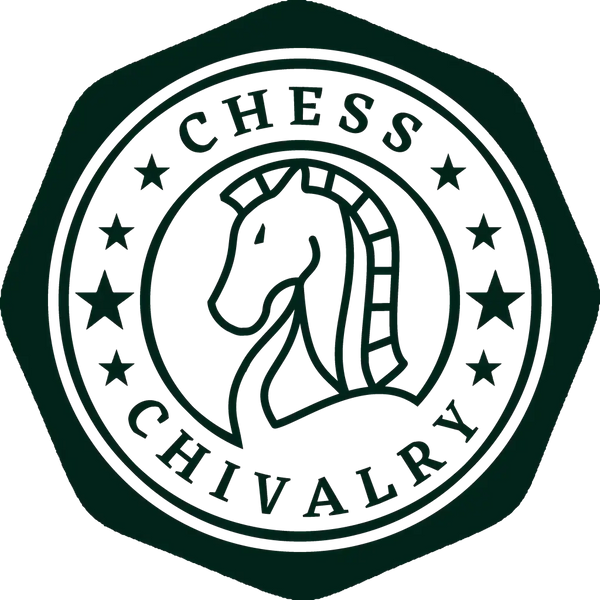
Chess & Strategy: The Guide for Chess Beginners
Share
If you haven't studied chess extensively before, you may well be overwhelmed with all the tactical possibilities in the game. And that's not uncommon, because after the white and black players have made one move each, there are already 200 different positions that can occur on the chess board. After both players have made three moves each, there can even be over 9 million different game constellations. Even though in this example not all of these possible variations are based on a rational way of playing, and even though not all of the moves are logical, they still illustrate the complexity of chess. To illustrate, the current world record by moves was set in December 2021 between Magnus Carlsen and Jan Alexandrovich Nepomnyashchi. After just under 8 hours, Carlsen won after an incredible 136 moves. Average chess games, on the other hand, end after 30 to 50 moves, depending on the playing strengths of the participants, and can already have up to an unimaginable 10^120 different game progressions. Even today, a complete analysis of chess is technically impossible, which is why even competitions between supercomputers are held in chess.
But to bring some order into this extensive game, I would like to show you some basics below, which will simplify the game and help you in making decisions for your chess moves. Even though there seem to be countless ways to move your pieces, there are also a few sensible and fortunately understandable rules that simplify your entry into chess tactics and the making of decisions. These so-called opening rules create a basic strategic understanding of the game for chess beginners and give first approaches for tactical moves. The goal is to help you better protect your king and put the other side's king on the spot with manageable effort.
The prerequisite for this guide is an understanding of the basic rules of chess. If you have not yet internalized them, feel free to read my chess rules. These cover all the movement patterns, rules and special rules you need to know to start playing.
You have already studied the rules and are ready for the first chess tactics? Then here are the six opening rules of chess.
Opening Rule 1: Occupy the Center
If you control the center, you control the game. For example, if you manage to get your pawns into the center early and defend them successfully against threats, you can concentrate on the flanks with your light and heavy pieces (bishops & knights / rooks & queens).

Here is an example of an aggressive chess strategy with a pawn attack on the center. Black must decide whether to take the pawn on d4 or rather give cover to his own pawn. However, both decisions still give White countless opportunities to hold the center.
If your opponent has lost the center, his defense must take care of both the center you occupy and the flank you choose. Consequently, your advantage is that you can concentrate your resources for your attack, while your opponent has to scatter his resources. A good way to show ways to conquer the center are chess openings. These show you different variations that have been extensively analysed over the years and give you a feel for the starting position after your first chess moves.
Opening Rule 2: Avoid unnecessary Pawn Moves
If pawn moves are still crucial for conquering the center, too many pawn moves can lead to game-changing disadvantages. Pawns are important for the structure of the game setup, but they are tactically weak and have limited movement and attack patterns. Every move you make with a pawn you could make with a knight or bishop instead, giving you more tactical options. So, unless your pawns are defending a weak square threatened by your opponent, move your more valuable pieces into the field and form a stable front line with them. Once your light and heavy pieces are in place and you want to go on the attack, you can consider how to involve your pawns. At this point it is also more likely that your pawns will have opportunities to support your stronger pieces, since after a few more moves you will be better able to assess both your pieces' and your opponent's tactical options.
Opening Rule 3: Develop your Pieces
As already mentioned: move your knights and bishops as soon as you have occupied the center with your pawns. It is advisable to bring the knights and bishops into play first, since the former can directly support your center, while the latter indirectly cover the diagonals for the further course of the game.

The following is a look at a Spanish chess strategy, also called the Spanish Game or Ruy Lopez. After the attack on the centre and the opponent's pawn by his own knight, the white player goes directly into the attack with his bishop and sets up a threat against the opponent's knight.
Get your rooks in position as well (see castling below) and find a non-attackable square for your queen to move from, at least defensively. She may be the strongest piece on the chessboard, but she is always a primary target if she ventures too far from her cover. Your pieces are developed once all light and heavy pieces have been brought into play and your king has castled.
Opening Rule 4: Move Only Once with Each Piece (if Possible)
The absolute priority is to get as many pieces into play as quickly as possible. But if you move pieces more than once, you give away your moves. This causes the other pieces to be delayed on the back-rank, while your opponent can move his into the field faster and claim important tactical playing fields for himself. It's like a race, so to speak, and the slower player is automatically put on the defensive. It doesn't matter which chess strategy or chess tactic you follow, moving several times without a concrete reason always leads to disadvantages. To avoid this, it is also advisable not to attack too early and to defend each moved piece immediately with another one. This ensures that your opponent cannot find any weak points and prevent you from developing your pieces with an attack. Only when your position is stable and your pieces are in play you can look for weak points in your opponent's position and consider your attack.
Opening Rule 5: Castling as Quickly as Possible
Castling is the most important special move in chess. It brings your king to safety and ensures that your opponent has to force his attack on one flank. In addition, castling brings your rook into action and allows you to connect both rooks early and with few moves.

Here is the continuation from the example diagram of opening rule 3 (Spanish Game). After Black moves his bishop to c5, White immediately castles and now has a good chance at the center, a threat set up against the opponent's knight, and a safe king. All this happened in just seven moves.
If you forgo castling, your king is vulnerable from both flanks and can be quickly targeted by your opponent's bishops. The consequence is often the loss of the right to castling due to zugzwang. The potential of your rooks is also weakened, as they must independently seek their way onto the board, often blocked by pawns. There are only a few chess strategies and chess tactics that require the king to remain in the center. And even those serve more to confuse the opponent than to provide real alternatives to common patterns of play. Consequently, aim for castling to one side as soon as possible.
Opening Rule 6: Don't Position your Knights at the Rim
The great and unique advantage of the knight is the ability to jump over pieces. No other piece on the chessboard has this tactical option. But this advantage has its price, which is reflected in particular in the low range of the knight.

Here, too, a continuation of the already well-known Spanish game. Black has now also castled and White plays his knight on h4. White still has the option on f5, but as soon as Black covers this square with a pawn and attacks the white bishop on b5, the game shifts far away from the knight at the rim.
In direct comparison to the bishop, rook and queen, the knight does not have a straight-line range, but rather a range within a radius. This also forces it to constantly change the colour of its square, which complicates the calculation of its moves. So, if you position your knight at the edge, it loses a lot of its value, because it can only be moved across the board in a limited way. For example, if the game shifts to the other flank, your knight will become almost inactive or at least have to make several moves until it reaches the other side of the chessboard. So, keep it as central as possible, unless you have a particular tactical motive for using it.
These six rules are of course only a rough first orientation to understand chess strategies and to apply chess tactics successfully. To internalize what you have learned, you should do one thing above all: play. You can do this on renowned chess portals like www.lichess.org or www.chess.com. Play against other players, play against artificial intelligences. Analyse your games and identify your blunders.
I wish you a lot of fun in the game, much success and rapid progress in learning.
See you soon.
Stefan
